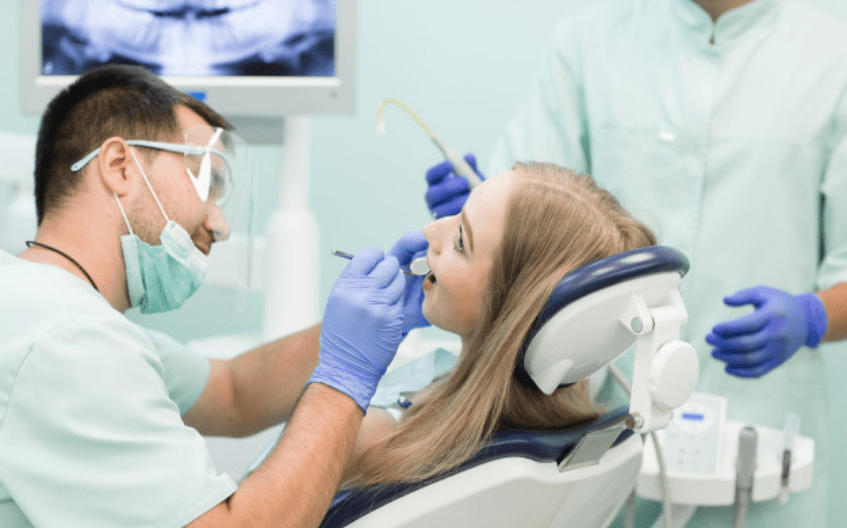
Many children and teens are diagnosed with this common dental condition.
You may have heard people say they had an impacted tooth when they were younger. But what does that actually mean?
What Is an Impacted Tooth?
As per the American Association of Orthodontists impacted tooth is any tooth (not just wisdom teeth) that hasn’t erupted (come in) where it isn’t supposed to.
Teeth can be impacted for many reasons. A child’s mouth may be too small for the adult teeth to come in where they are supposed to. Sometimes a tooth just grows in a different direction. We don’t always know exactly what causes an impacted tooth, but we do know that genetics can play a role. So, if you or your parents had an impacted tooth, there is a higher chance that your child may develop one too.
In children, an impacted tooth usually occurs when a baby tooth is lost, but the surrounding teeth are blocking the path for the new tooth to come through the gum. Or, if a baby tooth doesn’t fall out when it is supposed to, the permanent tooth may start to shift inside the gum and grow sideways.
In teens and young adults, wisdom teeth can become impacted if there isn’t enough room for them in the jaw. Because a person’s wisdom teeth develop later than the other teeth, there is a more substantial risk of them growing sideways. Some wisdom teeth develop completely on their sides!
Impacted teeth can cause tooth crowding from trying to wedge themselves into place. This could cause your child pain while chewing or lead to speech problems. Impacted teeth can even damage the roots of surrounding teeth. Due to the constant pressure from an impacted tooth, the roots of the surrounding teeth may begin to gradually break down or resorb. If left untreated, this could cause periodontal problems and eventual bone loss.
How Is an Impacted Tooth Treated?
Depending on the severity of the impaction and the number of teeth involved, the course of treatment can vary. If a baby tooth is blocking a permanent tooth’s path, it may require a simple extraction. Sometimes orthodontic therapy (braces) is necessary to fix the crowding. If several teeth are involved, extractions combined with braces may be suggested. Sometimes a device called a palatal expander is used to create more room and prevent any teeth from being removed. In extreme cases, orthognathic surgery, (also called corrective jaw surgery), may be performed to widen the jaw.
If impacted wisdom teeth are not removed, they can threaten the roots of the surrounding molars and may cause pain. An impacted wisdom tooth can also partially erupt above the gum. Extraction may also be recommended to prevent infection because it can be challenging to keep partially erupted wisdom teeth clean.
An impacted tooth may not necessarily be a cause for alarm.
There are more treatment options available the earlier an impacted tooth is caught. Routine visits with your child or teen’s dentist can help catch and prevent any issues before they become a problem.





